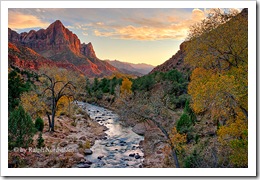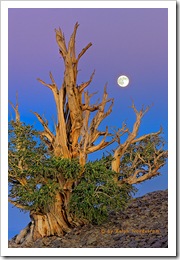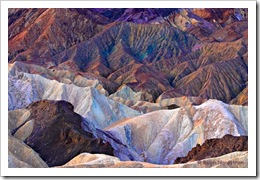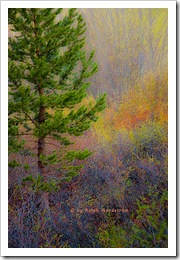I just read a great email from Brian Peterson, founder of The Perfect Picture School of Photography. He ran an unscientific opinion pole on whether photographers felt it was OK to dramatically alter photographs in Photoshop. Now, by ‘dramatically alter,’ Brian means to add major elements to an image that were not present in the original scene or make other major changes that alter the content of the image.
He has a provocative blog post with the title that starts, “Every photograph is a ‘lie,…’, In it he raises the excellent point that even those photographs that aren’t altered in Photoshop are still an abstraction of reality and thus a ‘lie.’ I recommend you read it.
What were the results of his opinion pole? Brian reports that 41% of photographers felt that it is OK to dramatically alter images in Photoshop and NOT tell anyone unless asked. And if asked, some would say, “It’s none of your business.” The reason photographers felt this way boiled down to two words – Artistic License.
I have my own thoughts on “artistic license” and would like to share them with you.
I sent Brian an email and would like to share its contents here.
Bryan,
Thanks for sharing your thoughts on dramatic alterations in Photoshop and in the camera. I’ll spare you a long winded email as I’m sure you have a lot more to read.
While, as a fine art landscape photographer, I resent the ‘reality standard’ placed on us by many of our viewers, I also resent film photographers who shoot Velvia 50 and then claim their images are unaltered. I don’t mind photographers who dramatically alter their images. But what I have a problem with is when they’re disingenuous and pass it off as a depiction of reality and not an artistic expression.
I’ve been strongly influenced by David Hurn, the Welsh Magnum photographer. Admittedly, he is a ‘documentary’ photographer but he stresses the importance of honesty in photographs which is different from believability. He freely admits that his work is successful because besides being honest it’s an abstraction that also sizzles.
I’m offended and insulted when filmmakers shoot sunsets and pass them off as sunrises by running the film backwards, when photographers drop skies into sunsets and the direction of the light on the earth is different from that on the clouds, where they drop lush fields of domestic flowers in the foreground of a picture of the Tetons and pass them off as wild flowers. To me this is not only dishonest, it’s laziness.
When people ask me if I manipulate my photographs I answer, ‘Of course.’ My goal is to create an emotional connection with the subject so that the viewer will treasure it and want to preserve it. As artists we all draw a line that separates what we will and won’t do and that’s our right. But we should believe in where we draw the line and be willing to say, “Oh no, that moon wasn’t there. I added it to make the scene more dramatic.” In other words, our art should be honest.
Thanks again for sharing your thoughts.
In the spirit of honesty, let me share with you a few of images from my collection that illustrate the point.
At shows I’m asked from time to time if the moon was really there or if I dropped it in. The moon was really there. I planned this shot for months so that I could be there when the full moon rose through the earth shadow behind the tree.
But did I alter the image? Yes, you bet. On the right edge of the photograph was a twig that I removed in Photoshop because it distracted the eye from the main subjects of the image – the tree and the moon. I also used some other techniques in Photoshop that accentuated the colors of the earth shadow in the sky and gave the tree a warm glow. The result is a powerful, dramatic image that hopefully communicates the timeless magnificence of these wondrous trees.
With this photograph I’m often asked if the colors are real, especially by those who are familiar with Zabriskie Point in Death Valley. The answer is, “Yes, the colors are real. They are there but they’re usually not that apparent.”
There are two things that draw them out. The first is the time of day when this scene was photographed. It was before sunrise when the light is soft and beautiful. The colors become washed out in the mid day sun but before the sun comes up they are more apparent. However they are still subtle.
Which leads to the second thing – the adjustments I made in Photoshop to bring out the purples, turquoises, cyans, reds and oranges. This is a prime example of how the camera can show us what our eyes don’t see. Would you have seen these colors if you were standing next to me when I took this photograph? Maybe and maybe not. It depends on how carefully you looked. The colors are definitely not as obvious as they are in this photograph but they are certainly there. And this photograph makes it possible to enjoy what you may have missed.
I intentionally tried to make this photograph look like an Impressionist painting and identified it as such in the title. The time of year was early spring, The aspens and willows were just starting to leaf out and the morning light on them was breathtaking. The scene literally stopped me in my tracks and I muttered out loud, “Impressionism.” In Photoshop I worked long and hard to give the photograph the qualities of an Impressionistic painting – pure colors and short, quick brush strokes that captured the light and the moment. That was my goal and I don’t wish to pass it off as anything different.
 Virgin River and the Watchman (2007)
Virgin River and the Watchman (2007)
This photograph was intentionally made to look like a painting and that’s the reaction that most people have to it when they view it in my booth. And I’m profoundly flattered when it is compared to a Hudson River Group painting as many have done. The content is definitely honest in that nothing was added. I believe the treatment is also honest in that it clearly is in the style of an American Romantic painting and not that of a photograph.
I could give more examples but I think these adequately illustrate the point.
These photographs are definitely artistic interpretations and expressions. After all, that’s what art is – the artist’s interpretation of the world and his or her unique way of expressing it. Are they honest? I think so and hope that you agree.
If you find this discussing interesting you may also want to read What Constitutes a Fine Art Photograph?
Join me on an upcoming workshop.
To see more of my photographs click here.
(1430)




I love your Watchman photo. I took one there as well in the Spring. I had wanted a photo of Watchman at sunset for at least 6 years and I was thrilled with the results. I did adjust it in Lightroom but I didn’t have to do much as the subject was already gorgeous. Thank you for your article on honesty in photography. I can relate to it.
Ralph, thank you for so completely covering an issue that I have struggled with myself for years. I think there is not much more that can be said about it, except to stress the honesty point – if you altered it, just be honest about it. My normal response to people that ask me why I have to alter photos and I tell them two things: One, its is my right as an artist and two, the camera’s spectrum of light is not as wide as the spectrum that the eye sees, so naturally the photo won’t be a true rendition of what I saw standing there at the scene. I manipulate it to look more like what I saw. This often handles those questions. I also tell them that I love art and color and sometimes magnify the elements of an image in whatever way pleases me and communicates the emotion that I intend show.
Your photos are beautiful and communicate a great understanding of our world. Thank you for sharing!
Sharon Beth
Sharon, I totally agree with your comments. A turning point in my understanding of the role of ‘manipulation’ in photography was realizing that art is interpretation. I’ve always been bugged by the awareness that nobody would question the right of a painter to interpret a scene in any way they wanted. So why not photographers. I produce art, not documentation. And therefore my photographs reflect the love and passion I have for nature – not what my eyes see but what my heart sees.